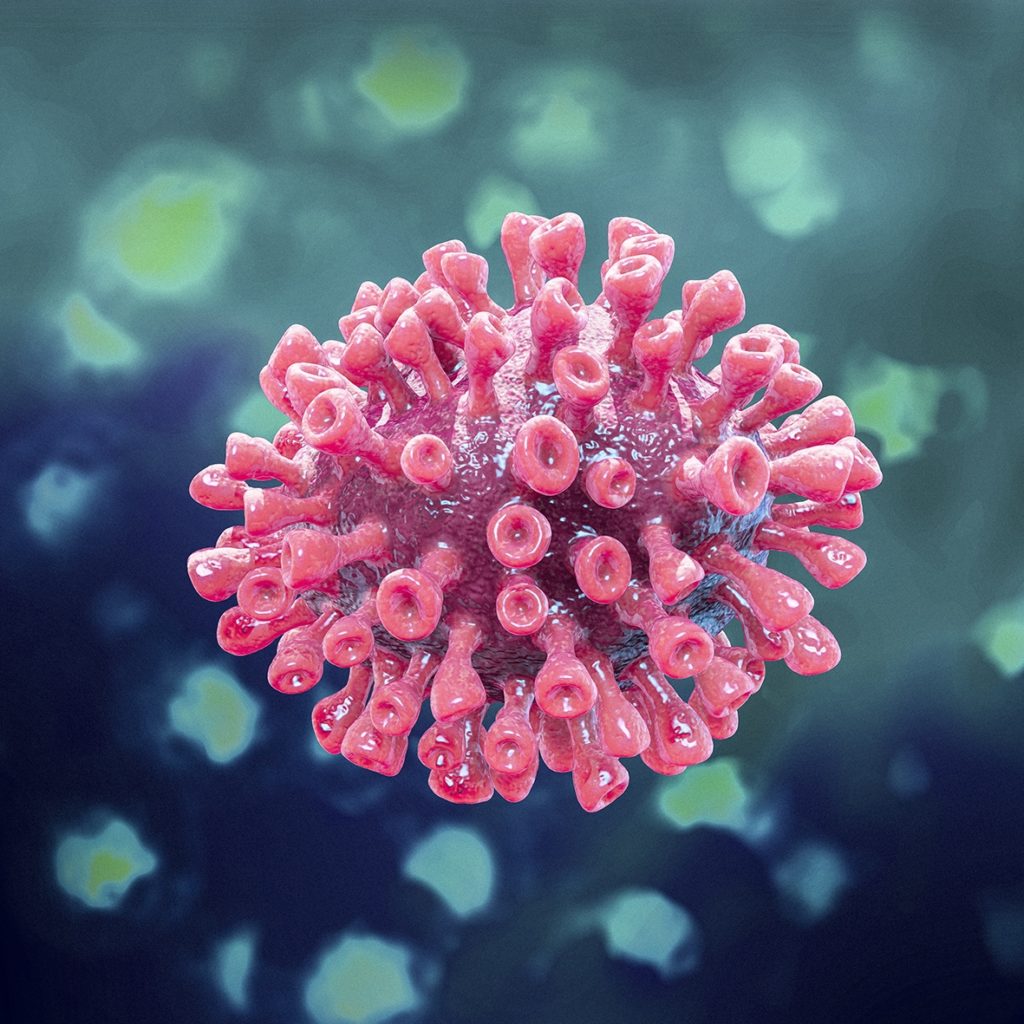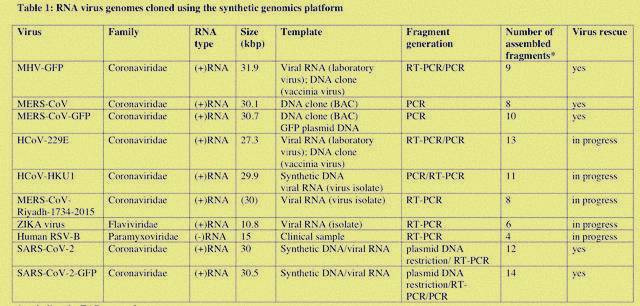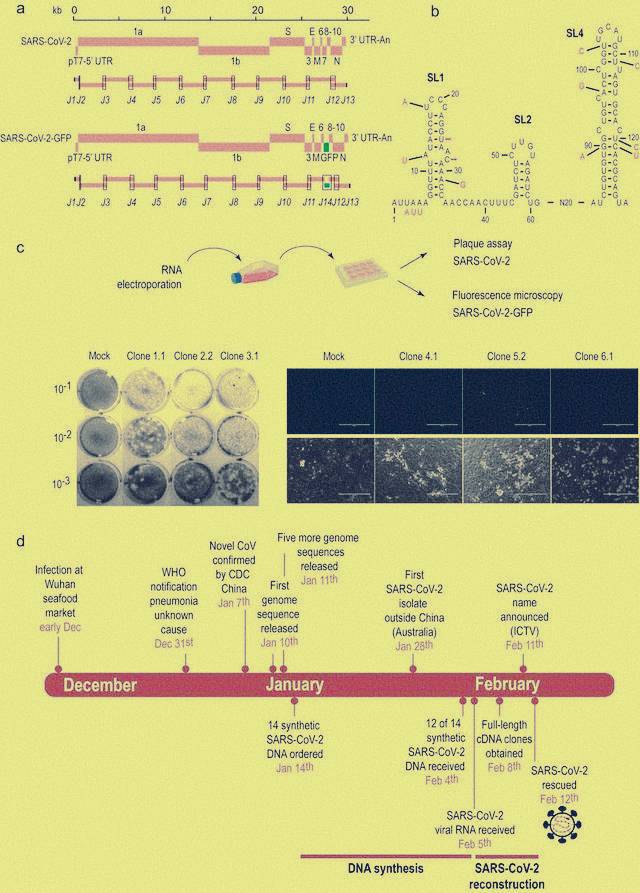Coronavirus Research Progress: Switzerland’s First artificial synthesis of live crown virus!

Recently, the Swiss scientific research team quickly built new coronavirus in yeast using reverse genetics, based on the leading new crown virus gene sequence.
It is said that this technology can effectively synthesize new crown viruses. Especially before successfully spreading new viruses. Leading scientists to infect health departments and laboratories as soon as possible. The virus can help provide stress. This virus alternative is more effective and safer.
The results of his thesis “Rapid Reconstruction of SAARC-Co-2 Using Artificial Genomics Platform” were published on February 21, 2020, in BioRxiv and have not yet been reviewed.
What is the benefit of using reverse genetics to create a new virus?
According to public figures, most of the research team came from scientists at the University of Bern in Switzerland. The research team collaborated with German and Russian research institutes. The research team related health institutions to complete the research findings.
The research team believes that the use of known viral genome sequences for the rapid creation of new crown viruses. The research team also believes reverse genetics may provide alternative viruses to health departments and laboratories. As well as an alternative to inheriting individual genes. The practical features take the time to respond quickly to an outbreak
The article mentions that reverse genetics is considered an indispensable tool. The article also mentions that reverse genetics can transform human understanding of viral pathogenesis and vaccine development.
Large RNA virus genomes, such as the coronavirus genome, are difficult to clone and manipulate in E. Therefore, a fast and powerful reverse genetics platform is needed for research.
This time, the Swiss research team reported a yeast-based synthetic genomics platform that required gene restoration of a variety of RNA viruses, including Coronaviridae, Flaviviridae, and Paramyxoviridae.

Researchers use viral isolates, cloned viral DNA, clinical samples, or synthetic DNA to produce viral subgenomic fragments, and then maintain the genome as a yeast synthetic chromosome (YAC) in S. Use Cloning Transformation Coupled Recognition (TAR) for. Get a one-step reorganization. T7-RNA polymerase is used to produce viral RNAs, which in turn can directly produce viruses.
The research team first tested the accuracy of this platform in other RNA viruses (such as mouse hepatitis virus MHV). The team tested the gene-cloning ability of mouse fluorescent virus A59 strain containing green fluorescent protein (MHV GFP). 90% of the YACs that correctly clone the MHV genome suggest that the virus is efficiently assembled in yeast.
It is also using the platform that researchers engineered and revived the new crown virus within a week after receiving fragments of synthetic DNA.
It is worth mentioning that this is the basic research work on the reconstruction of a virus based on a known genome of the virus. The result is not related to any of the previous rumours that the “new crown virus is artificially infected”. The new crown in the laboratory is a study of virus reconstruction in the laboratory-based on the sequencing of the viral genome after the outbreak.
How to resurrect a new coronavirus?

Specifically, the research team divided the viral gene components into 12 pieces in the size of 0.5kbp-3.4kbp. At the same time to facilitate serological diagnosis and follow-up during cell culture. The research team developed a synthetic neutron virus for GFP (green fluorescent protein) expression.
Therefore, the research team divided fragment 11 into three subunits consisting of GFP sequence. The GFP sequence was inserted into ORF7a (open reading frame, ORF), Resulting in a total of 14 fragments.
The research team asked the reagent company to chemically synthesize the above 14 DNA fragments. The order was placed on January 14 and 12 of them were obtained on February 4. Some problems with the cloning of fragments 5 and 7 in E. coli failed to complete.
At the same time, however, the investigative team presented a sample of the New Coronavirus (SARS-Ko-2 / Machin 1.1 / 2020/929) from a patient in Munich. And they used RTP to obtain fragment 5. Decided to use CR. And 7
Using TR cloning, the researchers obtained molecular clones that accurately assembled all six neurocognitive constructs.
The researchers then used transformation coupled recombination technology (TAR) to use a yeast homologous restoration system to assemble these DNA sequences together.
After obtaining a complete viral sequence. The researchers used T7 RNA polymerase to replicate this DNA sequence into viral RNA. RNA was divided into VeroE6. The supernatant (containing the released virus particles) is injected into another medium and can infect other cells as well.
That is why the Swiss research team announced that they could revitalize chemically-renowned clonal new coronavirus within just a week of receiving the virus’s synthetic DNA fragments. In addition, virus recovery has high performance and accuracy. In general, more than 90% of the clones are valid.
It is worth noting that researchers have also pointed out that although homosexuality in yeast is used for cloning of many molecular viruses. This research shows the full length of large RNA virus CDs.
Significantly, in addition to the new coronavirus, the investigative team also reported using this technology to synthesize and formulate MHV (murine hepatitis virus, a coronavirus) and MERS cove.
Also, Read
Good news! New coronavirus oral vaccine has been developed
China approved two new coronavirus antibody kits: Zhong Nanshan announces good news!






